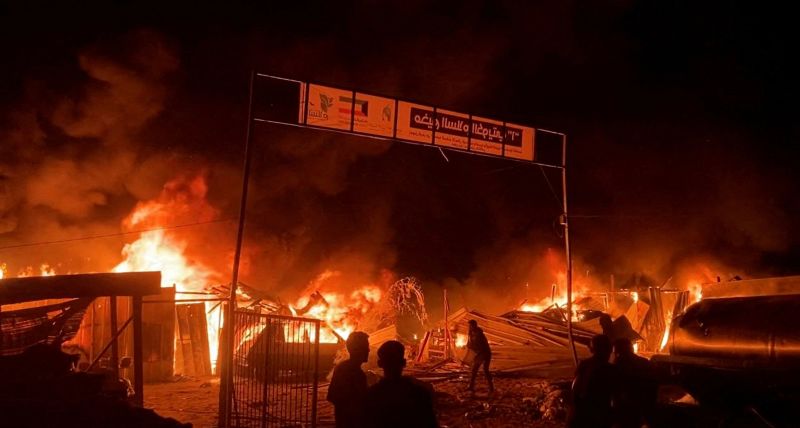The Body
Delving into the aftermath of the deplorable event that occurred at the Rafah tent camp, an in-depth analysis by CNN reveals that the munitions employed in the devastating strike were manufactured in the United States, marking a critical facet in the global arms trade narrative. This fresh insight invites contemplations on the intervention of superpower countries in regional crises and conflicts, as the armament source can deeply impact geopolitical interests, alliances, and strategic decisions.
To examine the evidence indicating U.S. involvement, the initial step was to conduct a meticulous inspection of the remnants left by the deadly event. Unexploded ordnance fragments were found at the scene, and subsequent examination indicated that they were part of a bomb called an MK-84 (also known as BLU-117). It is a general-purpose, aerially deployed unguided bomb which is typically utilized by the U.S. military.
These pieces of artillery can be traced back to their manufacturer in the United States through the serial numbers found on such fragments. The markings identified on these fragments are peculiar to U.S. production logs, and, therefore, provide credible evidence about the origin of these dangerous weapons.
The MK-84, produced in the U.S., is strategically intended for large area targets requiring significant impact. Each device carries a considerable load of explosive filler, a potent combined formula of Tritonal, Composition B or Minol 2, resulting in an explosively deadly consequence when deployed. These bombs are also routinely incorporated with the Joint Direct Attack Munition guidance systems, which transform them into precision-guided weapons.
Specific to the incident at Rafah tent camp, the estimated 2,000-pound bomb was undoubtedly a game-changer. Innocently constructed to shelter displaced individuals, the camp was tragically transformed into a scene of an inexplicable calamity. The high-intensity blast demolished infrastructure well beyond the intended target range, exhibiting the substantial potential of the American-made pieces of artillery.
Moreover, the analysis raises an overarching question on the United States’ involvement in supplying arms to the region, which inherently has its implications. As an international arms exporter, the U.S. has faced its share of criticism for facilitating violence indirectly via the sale of weaponry. The aftermath of the strike on Rafah tent camp inevitably places the responsibility spotlight on the U.S., pushing for more stringent arms-control regulations and the accountability of the countries involved in such transactions.
The strike on Rafah also demonstrates how the use of these powerful U.S.-made weapons in densely-populated regions significantly elevates the risk of civilian casualties. The strike resulted in a heartbreaking number of lives lost, encompassing both men and women, elderly and young alike. These deplorable incidents present a persuasive case demanding reassessment of arms-export policies and the impact on regional and global humanitarian concerns.
Furthermore, the incident outlines a pressing need for transparency and comprehensive scrutiny in arms deals, as they significantly influence geopolitical stability and human rights across different regions. The U.S.-made munitions’ role in the harrowing assault suggests a dire necessity for policy reconsiderations and international oversight to prevent such devastating strikes in the future.
Using the devastating strike on the Rafah tent camp as a reference, it is evident that the urgent conversation around arms control and accountability cannot afford to be overlooked any further. The U.S. must strike a balance between its strategic interests and its responsibilities towards global peace and stability, keeping the tragic fallout of such incidents as a grim reminder of the severe implications of arms trade.




